
Important Notice
The print version of this book comes with an audio CD that contains recordings of all the drum patterns. If you would like to order the CD in physical form or as downloadable audio files, go to www.dancinghands.com.
If you would like to see how every pattern is played, a DVD of all the patterns and downloadable video files are also available at www.dancinghands.com.
At the end of this ebook, you'll find information about other instructional books and videos for hand drummers available from Dancing Hands Music. These include the Gentle Djembe for Beginners video series, as well as the videos Bongo Grooves for Beginners and Cajon Grooves for Beginners.
How to Play Djembe West African Rhythms for Beginners
Copyright 2000 by Alan Dworsky and Betsy Sansby
All rights reserved. No part of this book may be used or reproduced by any means without permission except the blank charts on pages 91 and 92.
Published by
Dancing Hands Music
4275 Churchill Circle
Minnetonka, MN 55345
phone or fax: 952-933-0781
dancinghands.com
Book design and production by MacLean & Tuminelly
Cover art by Toni Pawlowsky
Illustrations by Jay Kendell
except illustration on page 78 by Robert Jackson
All parts on the CD performed by Sidi Mohamed Joh Camara
Printed in the United States of America with soy ink on recycled, acid-free paper by Banta ISG (Viking Press)
ISBN: 0-9638801-4-4
ISBN of ebook version: 978-0-9857398-0-5
We would, like to express our gratitude to all our teachers, especially Joh Camara and all the teachers at the Jembe and Dance Institute in Greensboro, North Carolina. We are also indebted to the creators of all the sources listed at the back of this book and to all the unknown creators of the rhythms of West Africa.
Table of Contents
CHAPTER 1
How this book works
D id you walk into a drum store and walk out with a djembe? Youre in good company. For centuries the djembe has been the driving force in the traditional music of West Africa. Now this light, powerful instrument with its deep bass tones and explosive slaps is fast becoming the hottest drum in the world.
This book is a complete, step-by-step course for beginners on how to play djembe. Right from the start youll be learning interlocking parts for some of the most popular West African rhythms: Kuku, Djole, Kassa, Madan, Suku, Sunguru Bani, and Tiriba. After working through only a few lessons, youll be able to put the parts together and start playing these irresistible rhythms with your friends.
While you learn the patterns, youll also learn how to make each of the basic strokes bass, tone, and slap with proper playing technique. We use life-like illustrations to show how each stroke looks from the outside and give detailed descriptions to explain how each stroke feels from the inside.
The CD that comes with the book gives you a chance to hear how each part sounds separately and how the parts for each rhythm fit together. It was recorded by Joh Camara, a master drummer from Bamako, Mali. Each rhythm lasts at least five minutes, so youll have plenty of time to play along. And when Joh solos during the final three minutes of each track, youll feel the thrill of playing your part along with an ensemble and lead drummer.
The book is organized into thirteen lessons arranged roughly in order of difficulty. Within each lesson, the patterns start simple and gradually get more complex. But youll hardly notice it, because we make sure you get the right-size steps, in the right order, at just the right time.
The charts are so simple youll be able to understand them even if youve never read music before. Weve also made them as big as possible so theyre easy to read from a distance. And we dont just dump a pile of charts on you and leave. Well be with you every step of the way, anticipating your questions, pointing out whatever is most important, and explaining whatever we think will make your journey easier.
Weve done everything else we could to make this book as user-friendly as possible. Whenever we introduce a new Playing Principle or Practice Principle, we highlight it in the margin for easy reference. Whenever we introduce a new term, we print it in bold letters, define it on the spot, and toss it in the Glossary at the back of the book. Weve included two pages of blank charts you can photocopy and use for writing down new patterns. And weve used a special binding that makes the book stay open and lie flat.
At the back of the book youll find Sources for Further Study. You can use the instructional books and videos listed there to learn the bell and dundun parts that traditionally accompany the djembe parts youll be learning here. And you can use the other sources to learn about the cultures and the contexts in which these rhythms are played in West Africa. Our hope is that by helping you learn to play the djembe, youll be inspired to go beyond this book and join an ensemble, play for dance classes, go to drum camp, or study with a teacher who can give you what we cannot.
CHAPTER 2
Understanding the charts
Heres a sample chart:

Box charts like these are the simplest charts for notating drum rhythms. Time moves from left to right and each vertical column shows whats happening on a single beat. Each of the three horizontal rows gives you a different kind of information.
The top row or count row tells you how to count a rhythm. The symbol + stands for AND . The shaded boxes on the count row indicate the pulse, which well explain in Lesson 1 .
The middle row tells you when and how to hit the drum. If theres a symbol in a box, you hit the drum on that beat with the stroke indicated by the symbol. For example, in the chart above, theres an asterisk in the box under beat 1. The asterisk is the symbol for the bass stroke, so you play a bass stroke on beat 1. If a box is empty, like the box under the AND of 1, you play nothing on that beat.
Here are all the symbols for how to hit the drum:

We use two additional symbols on the count row. Brackets [ ] -indicate phrasing. An underlined symbol  indicates where you should start playing. We explain more about these in Lesson 2.
indicates where you should start playing. We explain more about these in Lesson 2.
The bottom row on the chart tells you which hand to use. Youll be using both hands on all the rhythms, but the right hand often plays a dominant role. If youre left-handed, you can reverse the hands.
To make the charts as big as possible, weve made them just long enough to show one or two repetitions of each pattern. But you should think of every chart as being written in a circle. When you get to the end, go back to the beginning and start over without missing a beat.
We havent put any tempo markings on our charts. Ultimately, the tempo of a rhythm will depend on your playing situation. The important thing for now is to play each pattern at a steady tempo and not to leave a pattern until it grooves.
Think of every chart as being written in a circle. When you get to the end, go back to the beginning and start over without missing a beat.
This system of notation works great for teaching you the patterns in this book. But no system of written notation can capture the subtle nuances of a live rhythm. So while youre working your way through this book, be sure to listen to how the patterns are played on the CD.
Next page
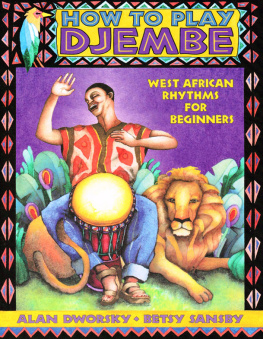


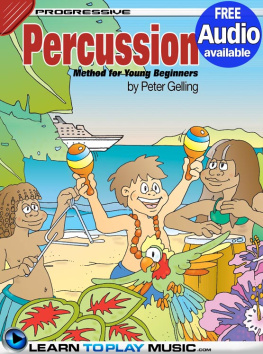
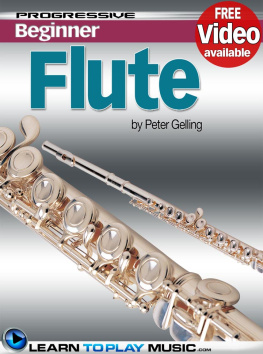

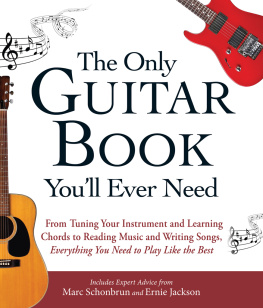
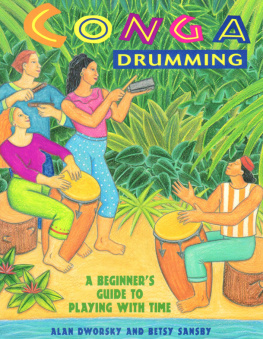
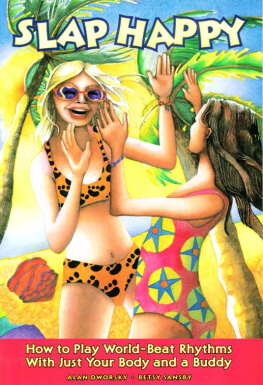
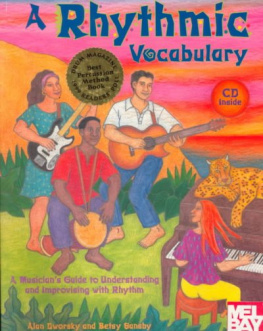



 indicates where you should start playing. We explain more about these in Lesson 2.
indicates where you should start playing. We explain more about these in Lesson 2.